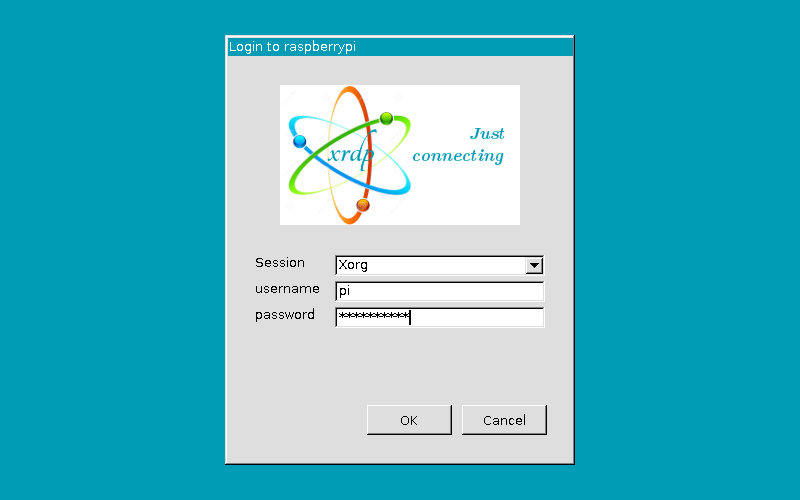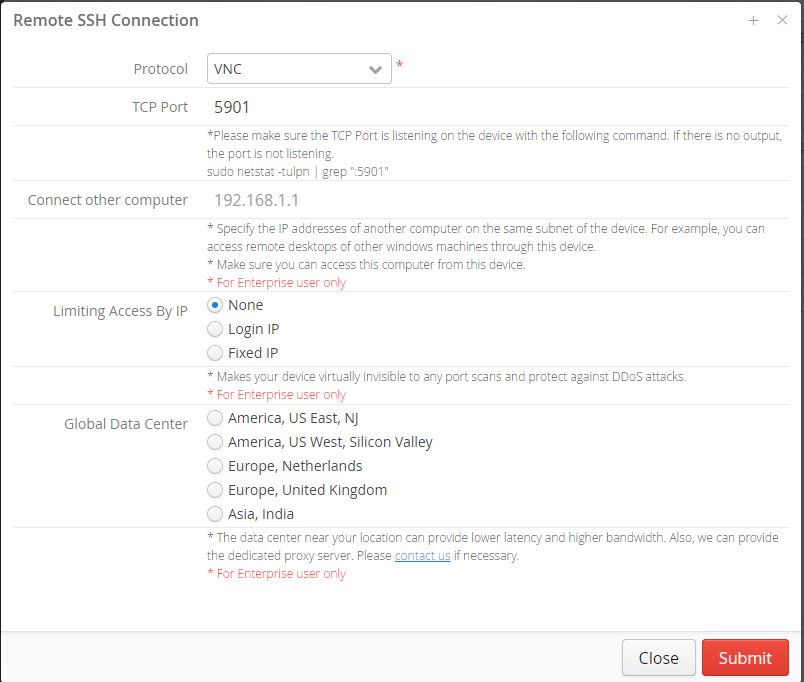In the era of smart technology, RemoteIoT with Raspberry Pi has emerged as a game-changing solution for developers and enthusiasts alike. This powerful combination allows users to create, deploy, and manage IoT projects remotely, offering unparalleled flexibility and scalability. Whether you're a beginner or an advanced user, understanding how to leverage Raspberry Pi for remote IoT applications can significantly enhance your tech capabilities.
RemoteIoT with Raspberry Pi free resources are now more accessible than ever, empowering individuals to explore the vast possibilities of connected devices. This technology allows users to monitor and control IoT devices from anywhere in the world, making it an ideal choice for both personal and professional projects. The affordability and versatility of Raspberry Pi make it a top choice for hobbyists and professionals alike.
With this comprehensive guide, we will walk you through everything you need to know about setting up and managing remote IoT projects using Raspberry Pi. From understanding the basics to advanced configurations, this article will serve as your go-to resource for mastering this cutting-edge technology. Let's dive in!
Read also:Fry 99com The Ultimate Guide To Online Gaming And Betting
Table of Contents
- Introduction to RemoteIoT with Raspberry Pi
- Setting Up Your Raspberry Pi for RemoteIoT
- Essential Tools and Software for RemoteIoT
- Ensuring Security in RemoteIoT Projects
- Networking Basics for RemoteIoT
- Applications of RemoteIoT with Raspberry Pi
- Troubleshooting Common Issues
- Optimizing Your RemoteIoT Setup
- Cost-Effective Strategies for RemoteIoT
- The Future of RemoteIoT with Raspberry Pi
Introduction to RemoteIoT with Raspberry Pi
RemoteIoT with Raspberry Pi offers a unique opportunity to connect, control, and monitor devices remotely. The Raspberry Pi, a low-cost, credit-card-sized computer, has become a staple in the world of IoT due to its versatility and ease of use. By combining Raspberry Pi with remote IoT capabilities, users can create projects that range from home automation systems to industrial monitoring solutions.
This section will introduce you to the fundamental concepts of RemoteIoT and how Raspberry Pi fits into this ecosystem. You'll learn about the benefits of using Raspberry Pi for remote IoT applications, including its affordability, open-source nature, and extensive community support.
Additionally, we'll explore the various use cases for RemoteIoT with Raspberry Pi, from personal projects to large-scale deployments. Understanding these basics will set the foundation for more advanced configurations and applications.
Setting Up Your Raspberry Pi for RemoteIoT
Hardware Requirements
Before diving into the software setup, it's essential to gather the necessary hardware components. Below is a list of items you'll need to get started with your Raspberry Pi:
- Raspberry Pi board (preferably Raspberry Pi 4 or later)
- MicroSD card (16GB or higher)
- Power supply (official Raspberry Pi power adapter)
- Wi-Fi or Ethernet connection
- Keyboard and mouse (optional for initial setup)
- Monitor or HDMI display (optional)
Software Installation
Once you have your hardware ready, the next step is to install the operating system on your Raspberry Pi. The recommended OS for RemoteIoT projects is Raspberry Pi OS, which is lightweight and optimized for IoT applications.
Here’s a step-by-step guide to installing Raspberry Pi OS:
Read also:Kai Bradbury Wikipedia The Rising Star In The Spotlight
- Download the Raspberry Pi Imager tool from the official Raspberry Pi website.
- Insert your MicroSD card into your computer and launch the Raspberry Pi Imager.
- Select the Raspberry Pi OS image and choose your MicroSD card as the target device.
- Click "Write" to begin the installation process.
Essential Tools and Software for RemoteIoT
Having the right tools and software is crucial for successfully managing RemoteIoT projects with Raspberry Pi. Below are some essential tools and platforms you should consider:
- SSH (Secure Shell): Allows you to remotely access your Raspberry Pi from another device.
- VNC Viewer: Enables graphical remote access to your Raspberry Pi.
- Mosquitto: A popular MQTT broker for messaging between IoT devices.
- Node-RED: A visual programming tool for wiring together hardware devices, APIs, and online services.
Ensuring Security in RemoteIoT Projects
Security is a critical aspect of any RemoteIoT project. Since your devices will be connected to the internet, it's essential to implement robust security measures to protect your data and devices from unauthorized access.
Here are some best practices for securing your RemoteIoT setup:
- Change the default login credentials for your Raspberry Pi.
- Enable a firewall to control incoming and outgoing network traffic.
- Use strong encryption for data transmission (e.g., SSL/TLS).
- Regularly update your software and firmware to patch security vulnerabilities.
Networking Basics for RemoteIoT
Understanding IP Addresses
IP addresses are fundamental to networking and are required for devices to communicate over the internet. Your Raspberry Pi will need a static IP address to ensure consistent connectivity.
Configuring Wi-Fi or Ethernet
Depending on your setup, you can connect your Raspberry Pi to the internet using either Wi-Fi or Ethernet. Below are the steps to configure each option:
- Wi-Fi: Edit the wpa_supplicant.conf file to add your Wi-Fi network credentials.
- Ethernet: Plug in an Ethernet cable and ensure your router assigns an IP address automatically.
Applications of RemoteIoT with Raspberry Pi
Home Automation
One of the most popular applications of RemoteIoT with Raspberry Pi is home automation. You can control smart devices such as lights, thermostats, and security systems remotely using your smartphone or computer.
Environmental Monitoring
Raspberry Pi can be used to monitor environmental conditions such as temperature, humidity, and air quality. By connecting sensors to your Raspberry Pi, you can collect data and analyze trends over time.
Industrial Applications
In industrial settings, RemoteIoT with Raspberry Pi can be used for machine monitoring, predictive maintenance, and process automation. These applications help improve efficiency and reduce downtime.
Troubleshooting Common Issues
Even with the best setup, issues can arise when working with RemoteIoT and Raspberry Pi. Below are some common problems and their solutions:
- Connection Issues: Ensure your Raspberry Pi is connected to the correct network and has the proper IP configuration.
- SSH Not Working: Verify that SSH is enabled in the Raspberry Pi configuration settings.
- Data Loss: Implement regular backups of your data to prevent loss in case of hardware failure.
Optimizing Your RemoteIoT Setup
To get the most out of your RemoteIoT project, it's important to optimize your setup for performance and efficiency. Here are some tips to help you achieve this:
- Use lightweight software and services to reduce resource consumption.
- Implement caching mechanisms to speed up data retrieval.
- Monitor system performance regularly to identify bottlenecks.
Cost-Effective Strategies for RemoteIoT
RemoteIoT with Raspberry Pi is not only powerful but also cost-effective. By leveraging free and open-source tools, you can significantly reduce the costs associated with your IoT projects. Below are some strategies to keep expenses low:
- Utilize free software such as Raspberry Pi OS and Node-RED.
- Opt for low-cost hardware components without compromising functionality.
- Explore community forums and online resources for free tutorials and support.
The Future of RemoteIoT with Raspberry Pi
The future of RemoteIoT with Raspberry Pi looks promising, with advancements in technology driving innovation in the IoT space. As more devices become connected, the demand for remote management solutions will continue to grow.
By staying updated with the latest trends and technologies, you can position yourself at the forefront of this exciting field. Whether you're a hobbyist or a professional, the possibilities with RemoteIoT and Raspberry Pi are endless.
Conclusion
In conclusion, RemoteIoT with Raspberry Pi offers a powerful and flexible solution for managing IoT projects remotely. From setting up your Raspberry Pi to optimizing your configuration, this guide has provided you with the knowledge and tools needed to succeed in this domain.
We encourage you to take action by experimenting with your own RemoteIoT projects. Share your experiences in the comments below and explore other articles on our site for further insights into the world of IoT.
References:


